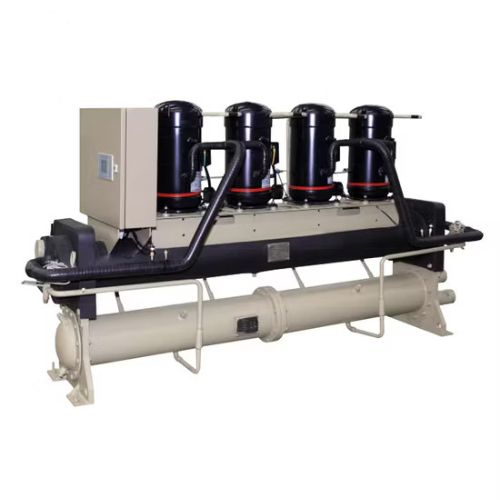Introduction
Laser Cooling Chillers are integral to maintaining the performance and longevity of laser systems across diverse applications. Lasers are highly sensitive to temperature variations, and even minor fluctuations can lead to operational issues, reduced beam quality, or equipment damage. To address these challenges, laser cooling chillers are designed with precision temperature control, advanced heat exchange mechanisms, and energy-efficient components. These systems not only prevent overheating but also stabilize the operating conditions required for consistent laser performance. As industries increasingly rely on lasers for applications like cutting, welding, medical procedures, and scientific research, efficient cooling solutions have become indispensable for ensuring operational excellence and sustainability.
Key Factors Influencing Efficiency
Precision Temperature Control
- Efficient chillers can regulate temperatures to within ±0.1°C, a critical requirement for laser systems that are sensitive to even minor thermal variations.
- This precision prevents overheating, stabilizes the laser beam quality, and ensures consistent performance across demanding applications like cutting, welding, or medical procedures.
Energy-Efficient Components
- Modern chillers incorporate variable-speed compressors and pumps that adjust their performance based on real-time cooling demand, reducing unnecessary energy consumption.
- High-efficiency motors and low-energy fans further contribute to overall energy savings while maintaining optimal cooling capacity.
Heat Exchange Technology
- Advanced heat exchangers, such as plate, tube, or microchannel designs, maximize heat transfer efficiency by enhancing the surface area for thermal exchange.
- Faster heat dissipation reduces energy demands, keeping the system efficient even under heavy loads.
Optimized Refrigerant Use
- The use of modern refrigerants like R-134a or R-410A, which are low in global warming potential (GWP), enhances thermal conductivity while being environmentally responsible.
- Proper refrigerant levels and types reduce compressor strain, resulting in smoother and more efficient operations.
Cooling Fluid Management
- The choice of cooling fluid, often deionized or distilled water, ensures excellent thermal conductivity while minimizing scaling and corrosion in the system.
- Flow rates and pressure settings are carefully calibrated to optimize fluid movement, improving heat absorption and transfer efficiency.
Compact and Smart Design
- Compact chillers save space and reduce thermal losses by positioning components closer together, improving overall energy efficiency.
- Integrated smart control systems continuously monitor operational parameters, enabling precise adjustments for maximum efficiency. Remote diagnostics and alerts further enhance system reliability.
Benefits of High Efficiency in Laser Cooling Chillers
Extended Laser Life
- Efficient cooling prevents overheating and thermal stress, which can degrade laser components.
- By maintaining a stable operating temperature, the chiller prolongs the operational lifespan of expensive laser systems.
Improved Laser Performance
- Stable cooling eliminates temperature-induced fluctuations, ensuring consistent beam quality, power output, and precision.
- This is particularly important in applications like medical surgeries or industrial cutting, where accuracy is non-negotiable.
Lower Operating Costs
- Energy-efficient chillers consume less electricity, translating into significant savings over time, especially for industries relying on continuous laser operation.
- Additionally, reduced maintenance requirements lower long-term operational expenses.
Environmental Sustainability
- High efficiency means less energy consumption, which contributes to lower carbon emissions.
- The use of eco-friendly refrigerants minimizes the environmental impact, aligning with sustainability goals.
Minimal Downtime
- Efficient chillers prevent overheating-related failures, ensuring continuous operation.
- This is particularly valuable in industrial and medical settings, where downtime can lead to production losses or interrupted services.
Maintenance Tips for Sustaining Efficiency
Regular Cleaning of Heat Exchangers
- Over time, dirt and mineral deposits can accumulate on heat exchangers, reducing their ability to transfer heat efficiently. Cleaning them periodically ensures optimal performance.
Inspect and Replace Refrigerants
- Regularly checking refrigerant levels and quality ensures efficient heat exchange. Use environmentally safe refrigerants to align with regulations and maintain performance.
Monitor Fluid Quality
- Cooling fluids must remain free of contaminants. Deionized or distilled water prevents scaling, corrosion, and fouling, ensuring efficient heat transfer and system longevity.
Optimize Settings
- Automated control systems should be fine-tuned to match the cooling needs of the laser system. Overcooling wastes energy, while undercooling risks overheating and system damage.
Scheduled Servicing
- Periodic inspections of pumps, compressors, fans, and control units help identify and rectify inefficiencies or wear before they lead to major issues.
Applications of Efficient Laser Cooling Chillers
Medical Laser Systems
- Lasers used in surgeries, dermatology treatments, and diagnostics require precise cooling to maintain safety and effectiveness.
Industrial Laser Applications
- For processes like cutting, welding, and engraving, efficient cooling is vital to ensure consistent performance and prevent thermal damage to laser components.
Scientific Research
- Sensitive laser systems used in high-precision experiments and measurements demand stable temperatures to avoid disruptions in experimental outcomes.
Semiconductor Manufacturing
- Lasers used in lithography and etching processes rely on chillers to maintain the precision and reliability required in semiconductor production.
Conclusion
The efficiency of laser cooling chillers goes beyond temperature regulation; it encompasses improved laser reliability, reduced energy consumption, and significant operational cost savings. With features like precise temperature control, environmentally friendly refrigerants, and smart technologies, these chillers enable lasers to perform at their peak without interruptions. They also contribute to sustainability efforts by reducing carbon emissions and minimizing waste energy. By investing in high-efficiency laser cooling chillers, industries can enhance productivity, extend the lifespan of their laser systems, and ensure a reliable solution for future needs. In a world where lasers are central to innovation and precision, efficient cooling systems are a critical component of progress.

